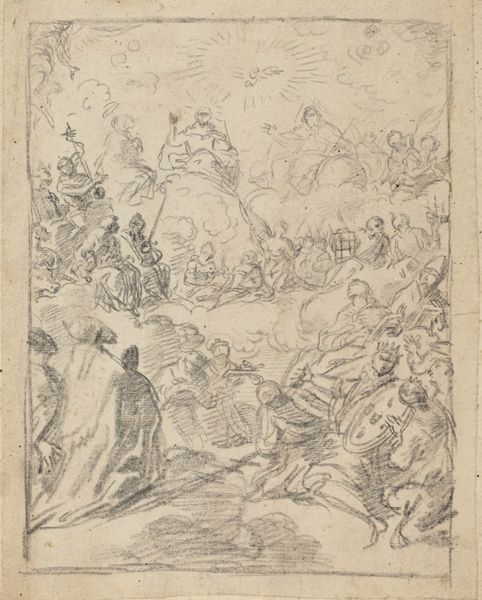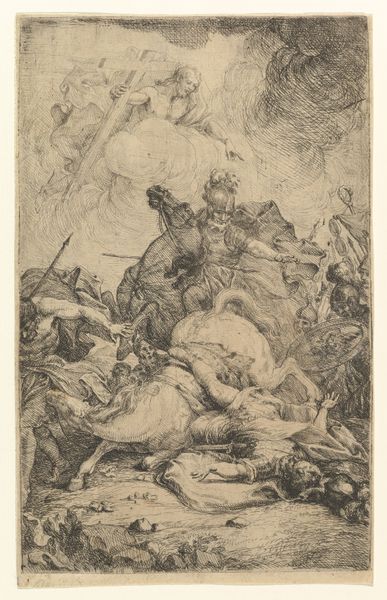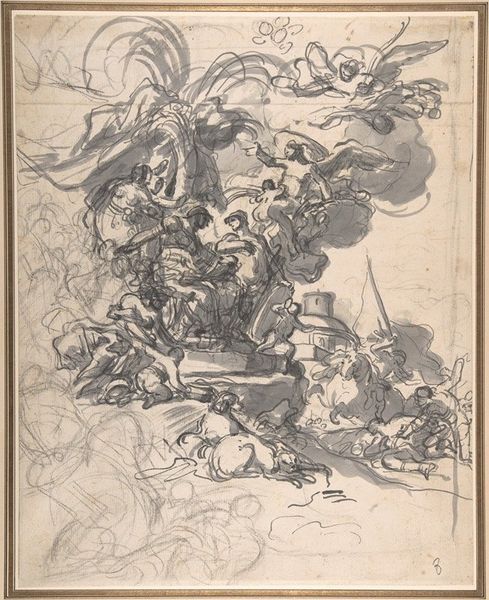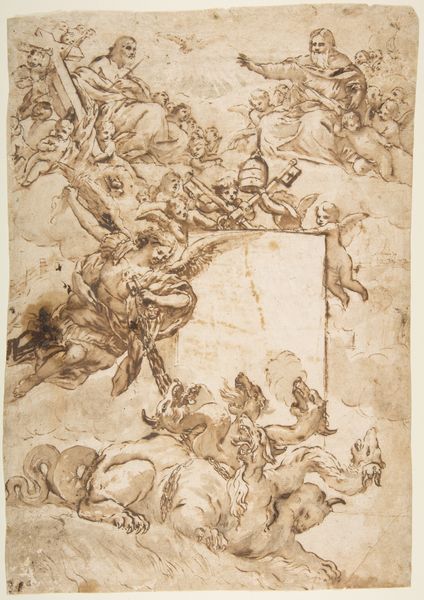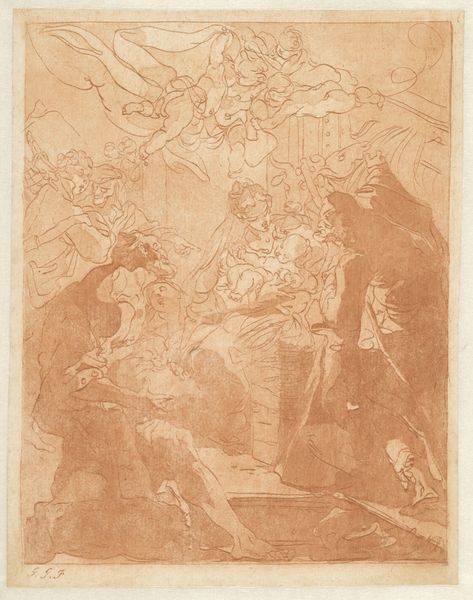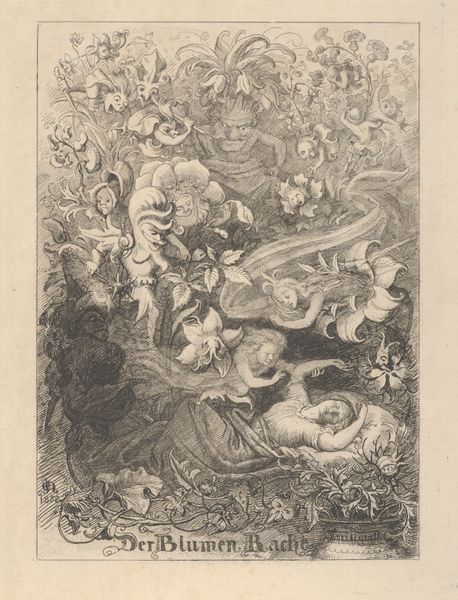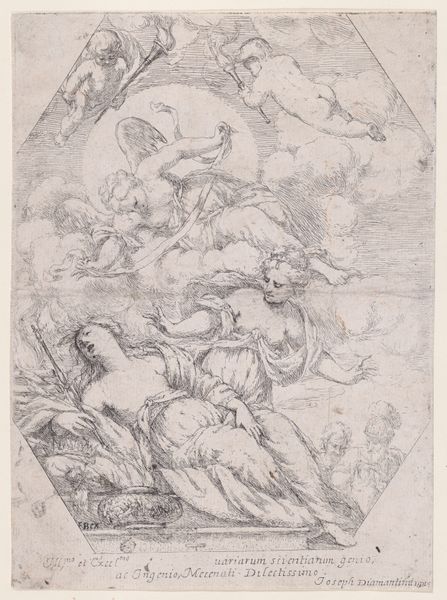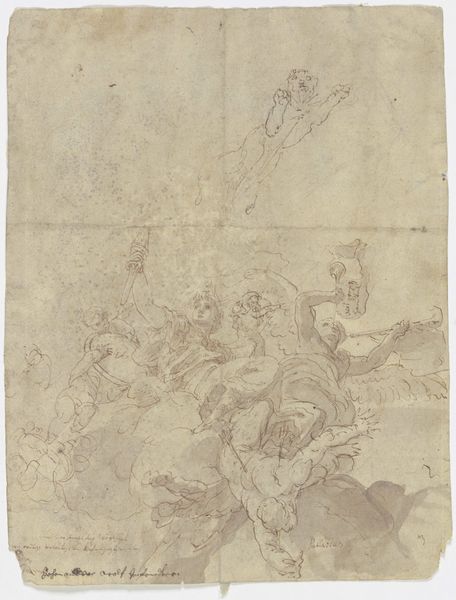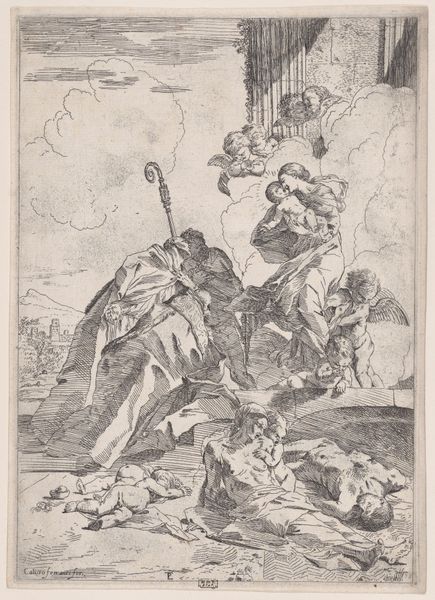
The forge of Vulcan with smiths striking an anvil with hammers, while Mars and Venus embrace in the heavens above 1635 - 1664
0:00
0:00
drawing, print, engraving
#
drawing
#
allegory
#
baroque
# print
#
figuration
#
history-painting
#
engraving
Dimensions: Sheet (Trimmed): 16 in. × 11 7/8 in. (40.7 × 30.2 cm)
Copyright: Public Domain
Curator: Looking at this print, I’m struck by the sheer drama and implied sound. All those straining bodies. Editor: That's a superb initial read. This is an engraving by Giovanni Pietro Possenti, dating from around 1635 to 1664. The piece, currently residing in the Metropolitan Museum of Art, is entitled "The Forge of Vulcan with Smiths striking an anvil with hammers, while Mars and Venus embrace in the heavens above." Curator: Embracing deities above a scene of sweaty labor... I see a fascinating juxtaposition here. This artist masterfully blends themes of love, war, and the everyday grind, reminding us that even gods aren't immune to human foibles, if not earthly effort. Editor: Agreed. Possenti’s graphic treatment, created by way of printmaking techniques, adds to this powerful emotional tension through dramatic, linear composition. The way light and dark converge amplifies its dynamic energy, pulling me in to the relentless hammering. The chaotic tangle of lines almost vibrates on the surface. Curator: Observe how this aligns with the Baroque sensibility: a real fascination with intense movement and emotion, expressed using recognizable allegorical characters. The inclusion of Vulcan's forge hints at ideas of creation, industry, and perhaps even destruction, all common threads woven through that period. It's amazing to observe that printmaking played an outsized role in shaping the symbolic imagination. Editor: Yes, you can see how the spiraling figures seem to draw from Mannerist painting, creating a sense of almost manic activity contained within the bounds of the page. The tonal gradations achieved with those lines are remarkably sophisticated, given the medium. Curator: I keep coming back to how the placement of Mars and Venus almost neutralizes the visceral labor portrayed below. This placement emphasizes a type of universal balancing act between conflict and affection. A cultural memory passed through repeated, similar visual tropes. Editor: It also reminds us of the social and historical importance of printing in the distribution of ideas, artistic styles, and moral codes during this era. The artist invites close reading and moral reflection via the composition itself. Curator: Seeing it through the lens of psychology and anthropology, it confirms how symbols carry weight. Each viewing reinforces shared knowledge. Editor: By analyzing formal aspects in conjunction with historical meaning, the work unveils both its intrinsic power and embedded ideologies. Fascinating.
Comments
No comments
Be the first to comment and join the conversation on the ultimate creative platform.
